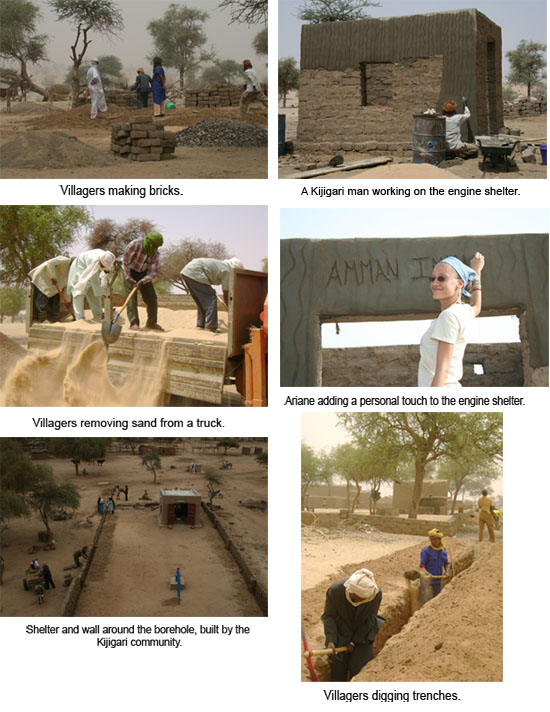I apologize in advance, because I have decided to postpone our entry about our Heroes of Compassion until next week. This week, I will follow up on last week’s installment to explain to you how the Kijigari community helped build their Montessori Well of Love. Having successful stewardship of a borehole is not simply about managing it properly once it has been built; it is also about contributing to building and establishing the borehole within the community as the borehole is being constructed.
What did Kijigari contribute toward the construction of their Montessori Well of Love?
The villagers of Kijigari contributed close to $1000, over 50
 |
How did the villagers come up with their contribution?
As I alluded to last week, Kijigari is an amazingly well organized village. The village itself is separated into 6 quarters, or neighborhoods, if you will. In order to decide how the village would come up with its contribution, all the villagers gathered in community meetings for several nights in a row. They decided that each neighborhood would donate an equal amount of money, bricks, and manpower for labor. Then the women and men of each neighborhood divided their contribution equally, where the women gave a certain number of bricks and money, and the men gave equal amounts. However, only men contributed labor as the tasks necessary required a great deal of physical strength.
Why is a Village Contribution Important for the Sustainability of a borehole?
To some of you, it may seem odd to request a village contribution when you know that the people of the Azawak have so little. What possibly might they have to help build their borehole? The simple answer is that they can and did do a lot. Having the villagers participate is crucial for ascertaining the longevity of their borehole. Contributing their own precious resources helped them understand the worth of their infrastructure, above and beyond its life giving ability through water. The villagers’ sacrifice gave their borehole added value and esteem. It also gave the community a great sense of pride, as they knew that they had made a precious personal investment in their infrastructure.
Stay tuned to read our weekly summer installments on the Kijigari Well of Love! I look forward to sharing with you the amazing stories of our Heroes of Compassion next week!
Sincerely yours, for the children of the Azawak,
Ariane








No comments:
Post a Comment